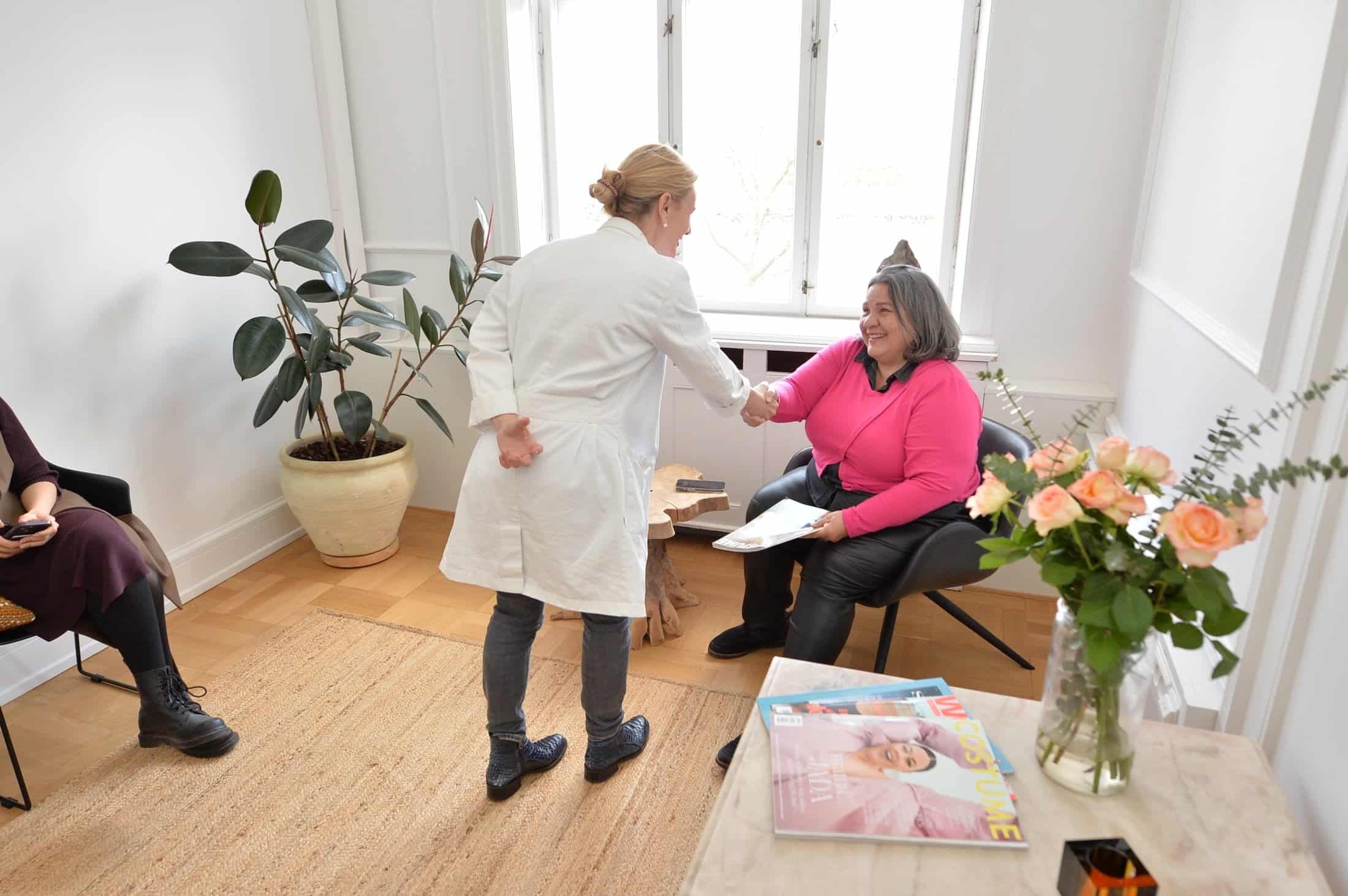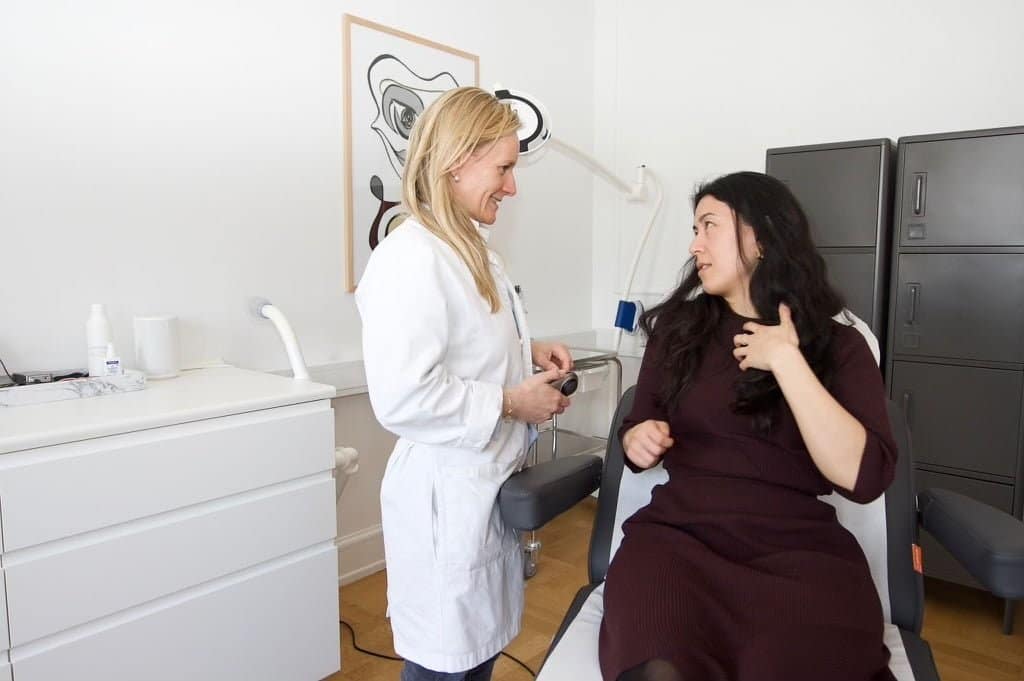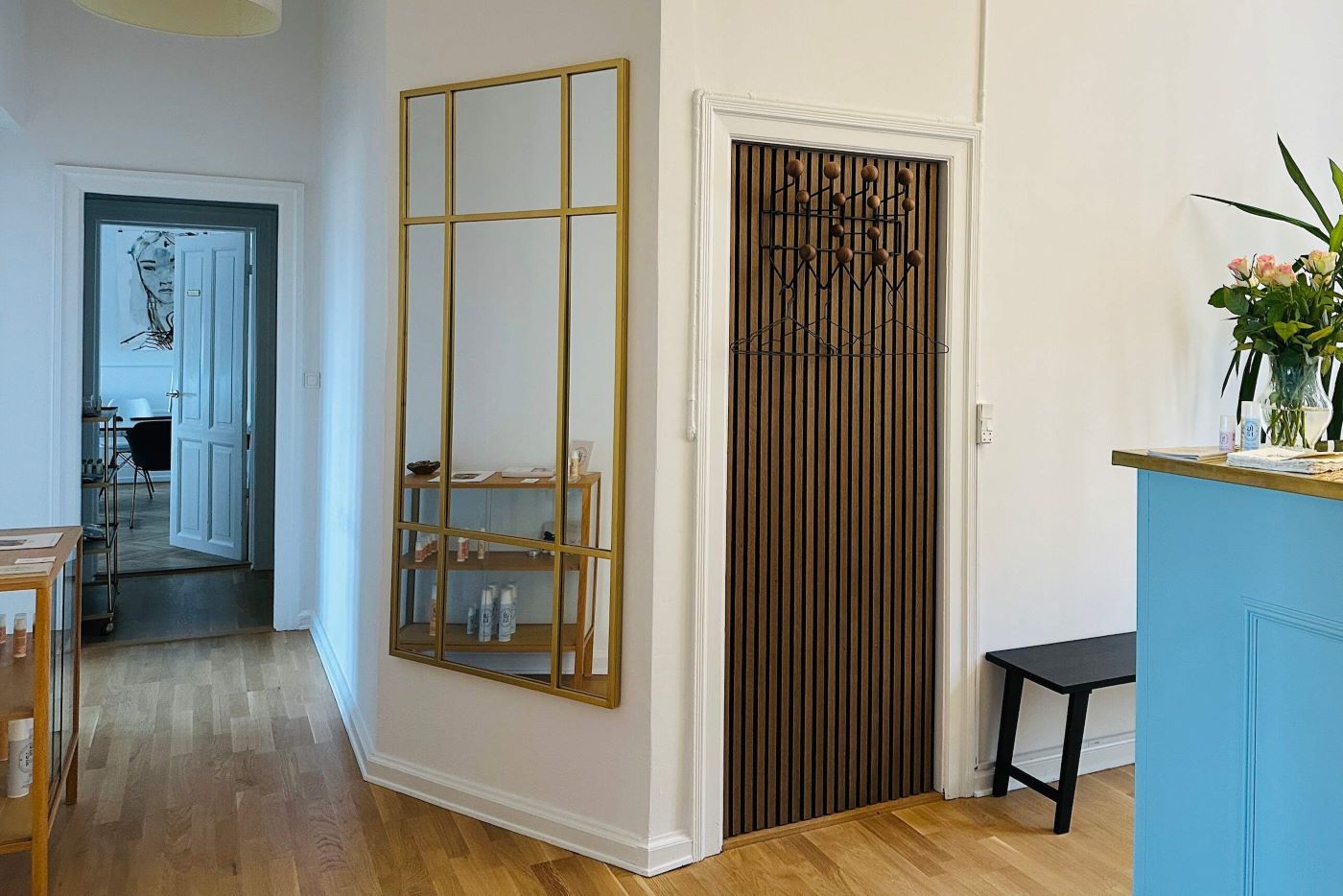SkinCheck is your skin health systemized to put you at ease.
We offer great service and reassurance in our welcoming clinic centrally located at Østerport Station by Dr Inanna Weiss, one of Denmark’s most experienced skin cancer specialists.
Years of experience have taught us that early skin cancer detection is important. Therefore, we want to offer an easily accessible full-body examination to as many people as possible and to systemize this to increase the possibility of early skin cancer and melanoma detection.
How SkinCheck and Mole mapping work
SkinCheck is a systematic examination of your entire body with both dermatoscope and mole mapping.
Once you have decided that you want a SkinCheck or SkinCheck plan, you can book an appointment online by following “Book appointment” after login. If you prefer to book an appointment by phone, you can contact our friendly staff on +45 61101810.
The examination takes between 25-45 minutes and is performed by a skin cancer specialist. You will be asked to strip down to your underwear. You will then be examined from head to toe with a dermatoscope.
Any moles, spots or lumps are assessed using the dermatoscope – a medical instrument that illuminates and magnifies your skin. The light is polarized so it can penetrate the top layer of skin more easily, allowing the doctor to see features that would otherwise not be visible, enabling the detection of subtle signs of skin cancer.
You will then be photographed for mole mapping: this is whole body photography that is supplemented with single dermoscopic images of individual skin changes and is an advanced method of monitoring moles (nevi) and other skin lesions over time. In particular, this technique is used to identify changes that may indicate skin cancer, including melanoma, at an early stage.
Mole mapping:
The whole body or specific areas of the skin are photographed with a special camera. This is supplemented with digital dermoscopy, where dermoscopic images are taken of selected skin changes. The images are uploaded to a specialized software that helps analyze and follow the evolution of moles over time. The images form the basis of a baseline against which future images can be compared. The software can compare new images with baseline images and identify changes in shape, size, color and structure. At the next visit where new images are taken, the software will detect changes in existing skin changes and detect new skin changes.
BENEFITS OF MOLE MAPPING
- Early detection of skin cancer:
- By detecting changes in moles early, doctors can identify and treat skin cancer at an early stage, increasing the chances of successful treatment.
- Accuracy:
- Mole mapping provides precise and detailed documentation of skin condition, helping to reduce uncertainty and misdiagnosis.
- Monitoring of high-risk patients:
- The method is especially useful for people with multiple moles, previous history of skin cancer, or family predisposition to melanoma.
- Who should consider mole mapping
- People with multiple moles.
- People with moles that have changed in appearance.
- People with a history of skin cancer or a family predisposition to skin cancer.
- People with fair skin who tan easily as they are at higher risk of skin cancer.
READ MORE ABOUT THE PROCEDURE
You can make your appointment by calling our staff or online. We have a patient questionnaire we’d like you to fill in either online prior to or upon arrival at the clinic. When it’s time for your consultation, you will be guided to the consultation room where you will be asked to disrobe to your underwear. Our expert systematically examines your entire body from top to bottom, looking closely at any moles, spots or lumps of interests. Moles and other skin lesions are inspected using a dermoscope, which magnifies and illuminates the skin with a polarised light, enabling the examining doctor to see small skin cancer clues or other changes.
You will be asked to sit and lie down and turn.
Your doctor will check with you before examining private areas such as your buttocks, and breasts if you are a woman. Skin cancers are rare on the genitals, so this is not a routine part of the examination and if you are more comfortable not having those areas checked, you can choose that. The doctor will examine your scalp, but bear in mind that if you have long hair it might not be possible for them to see all spots there.
During the examination, the doctor will take note of any spots with unusual colouring, shapes or other features. Sometimes, it is possible to identify a skin cancer just by examining it, but in most cases if anything suspicious is noted a skin biopsy will be recommended. This can be performed either right away or at another appointment in the very near future. Should this be necessary a personalized plan will be agreed upon.
Many times lesions (bumps, moles, lumps, keratosis) are identified that are of no medical concern, but are displeasing and unwanted. If that is the case a plan and appointment to have them removed can be made.
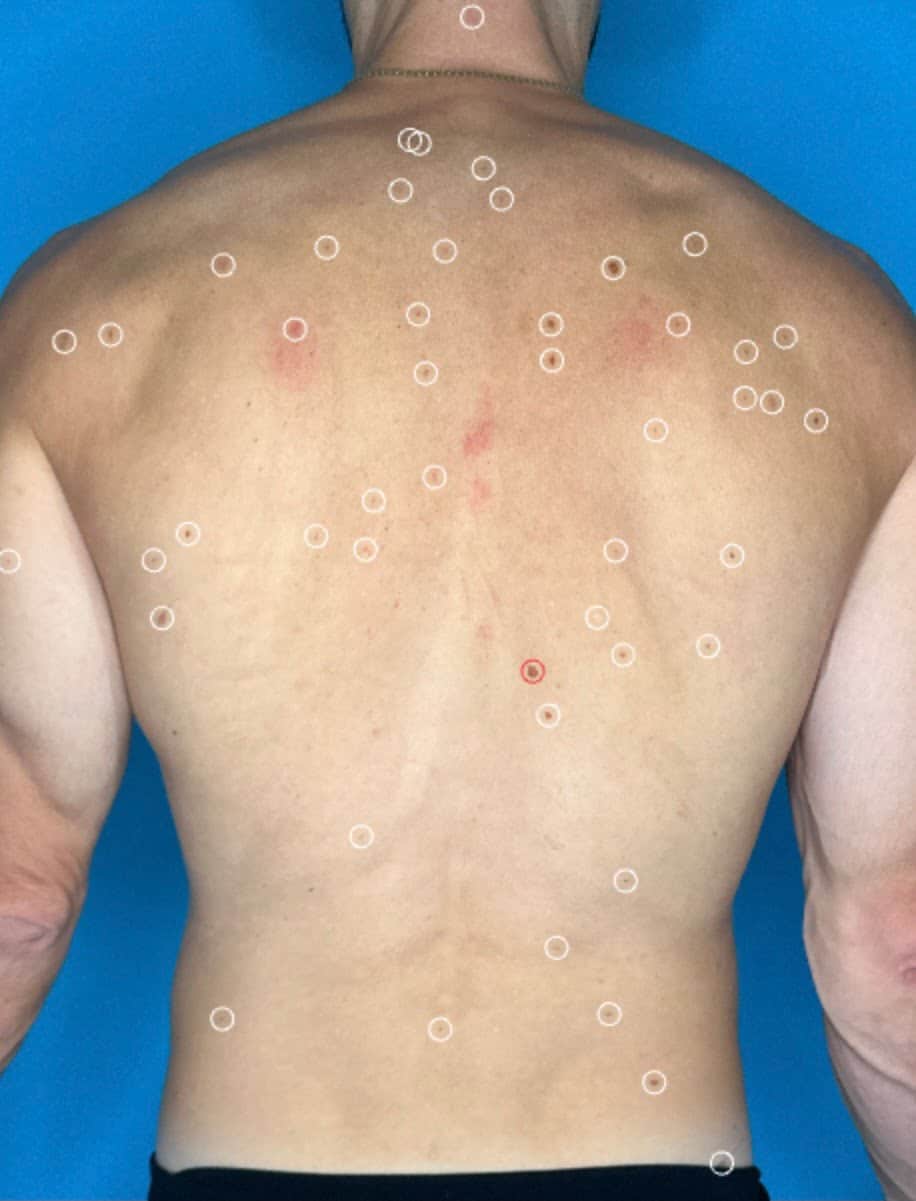
Follow Us
Why choose us?
We aim to give you exceptional service and peace of mind by providing access to professional care in times where this is limited. We don’t rush and are available when you need us, We want to help you stay healthy and can also treat you should you have a concern. We provide treatment by Scandinavia’s most experienced experts in Skin Cancer treatment and use innovative technology along with well tried traditional methods.
-
-
-
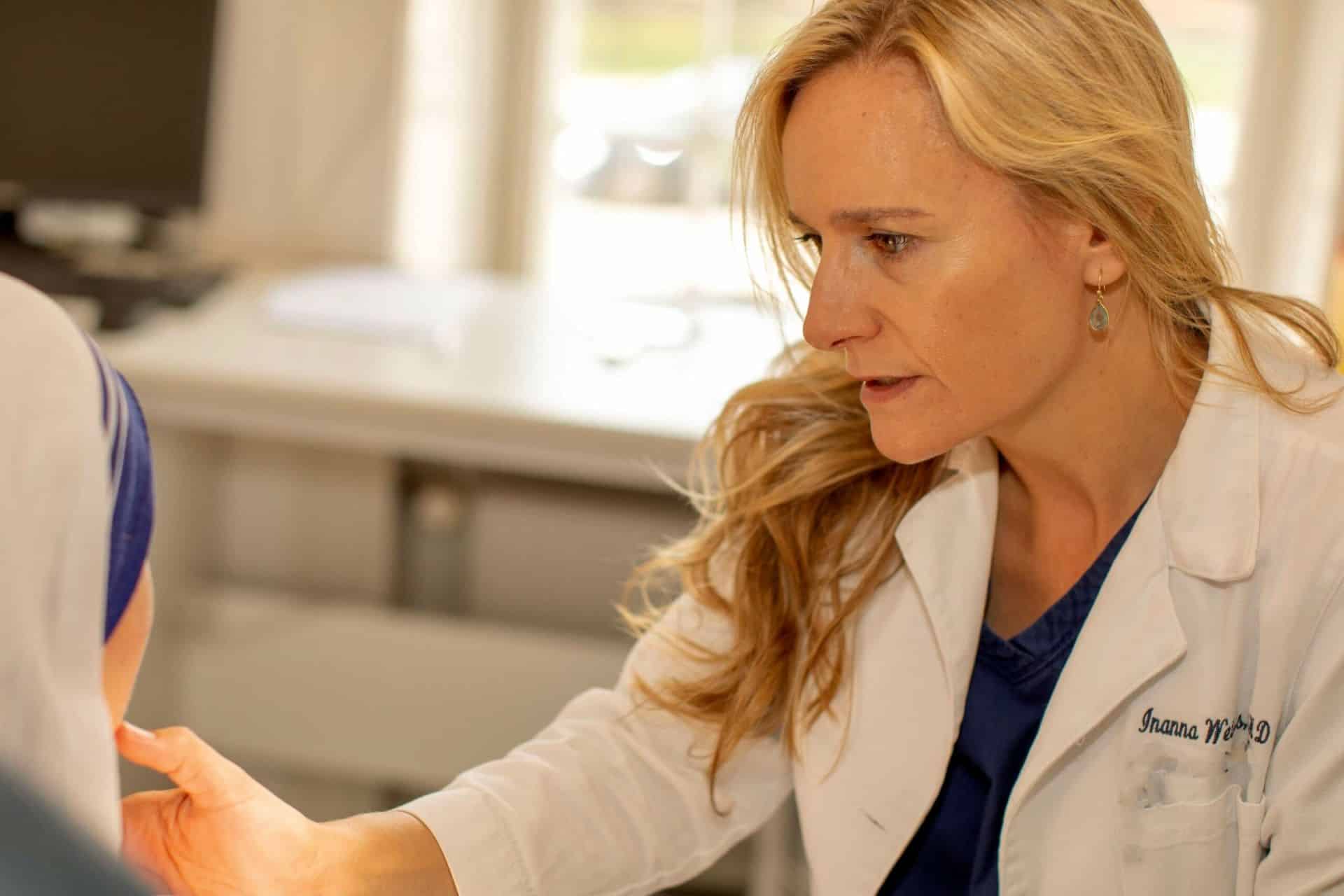
“My mission is to provide my patients with careful assessment and advice, clear expectations and safe and effective treatment. I am committed to maintaining the highest level of professional excellence and staying current with the latest advances in skin cancer detection, treatment and the rest of my profession.”
Dr. Inanna Weiss, Specialist in plastic surgery




